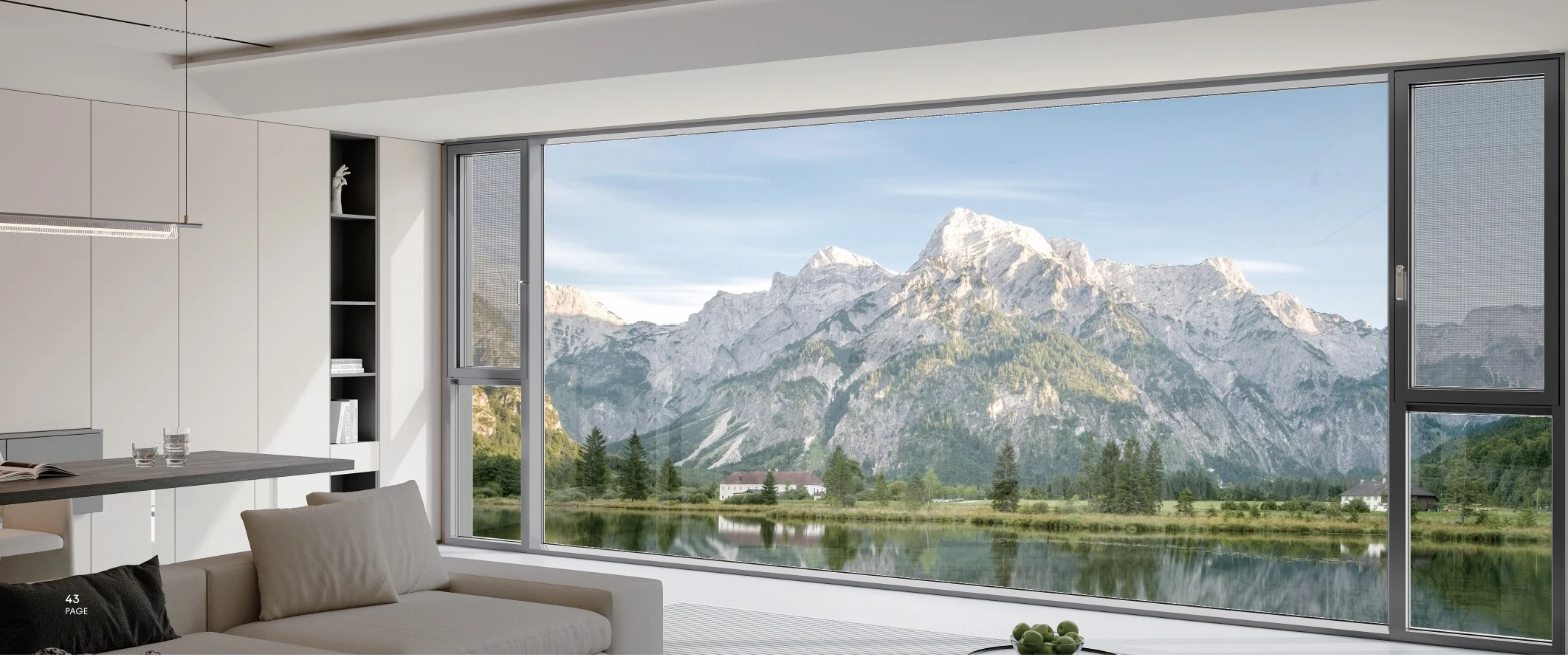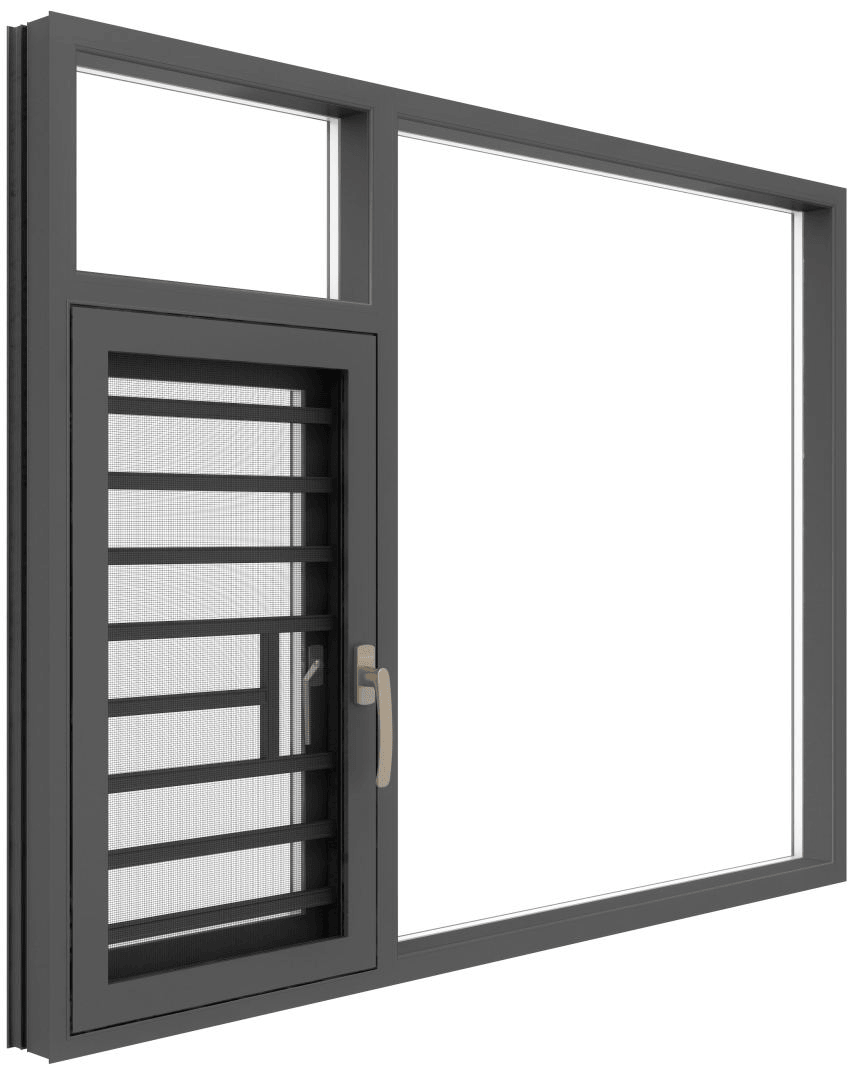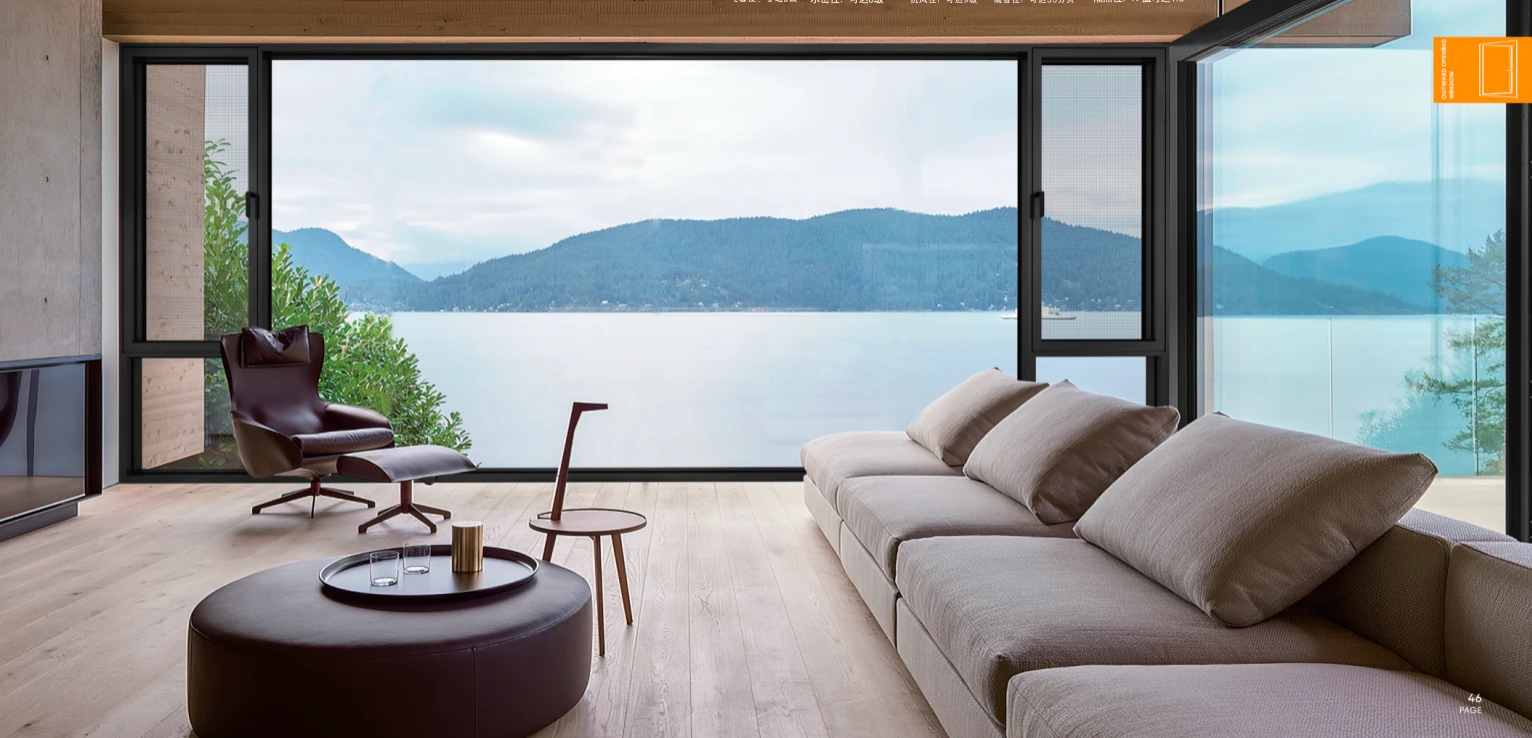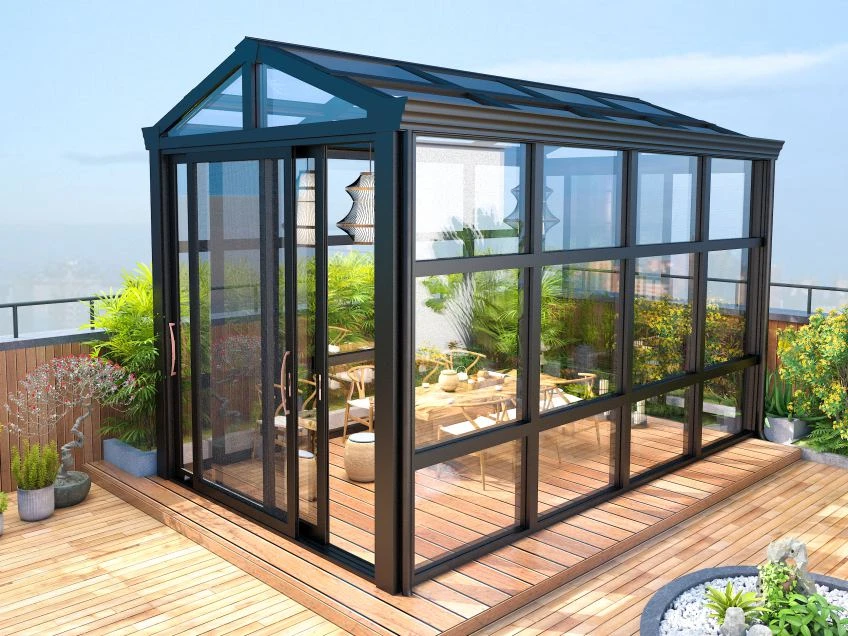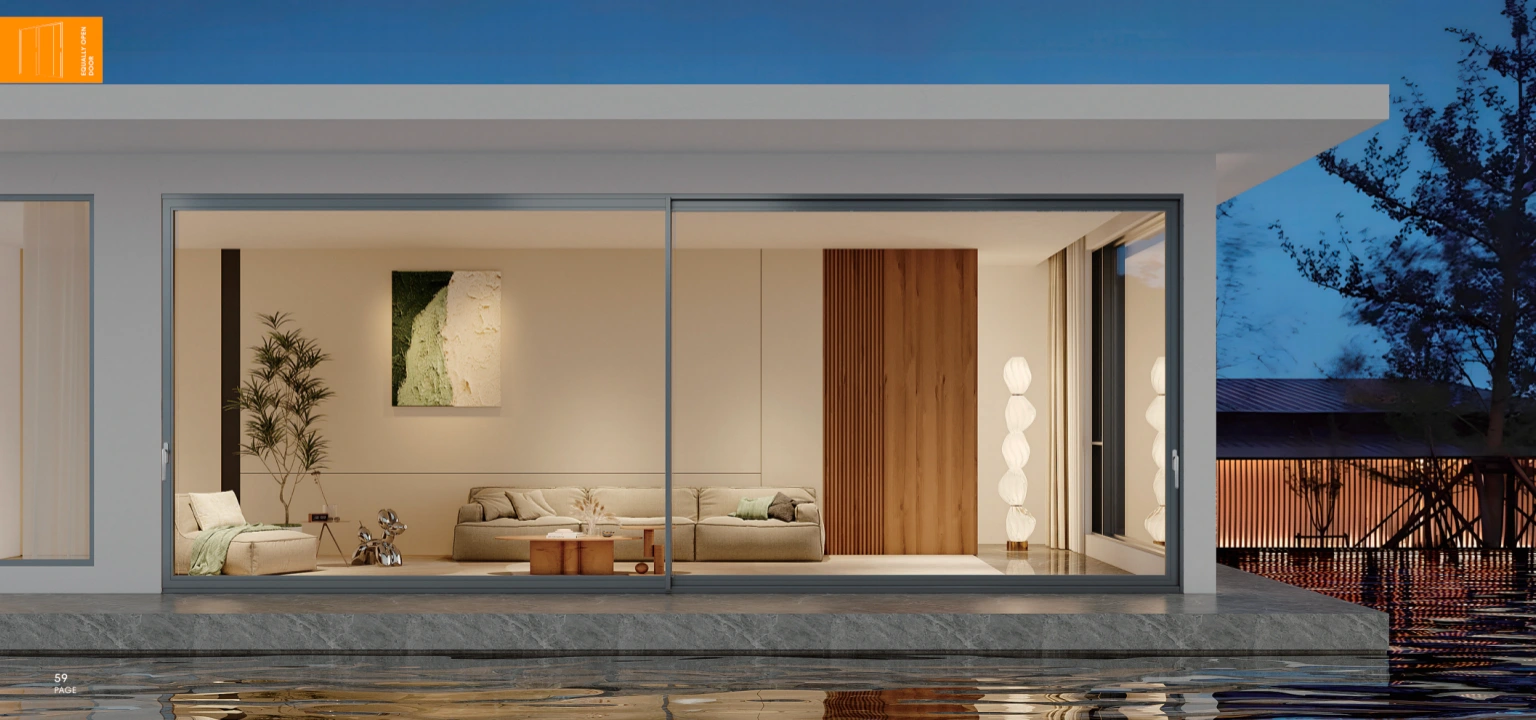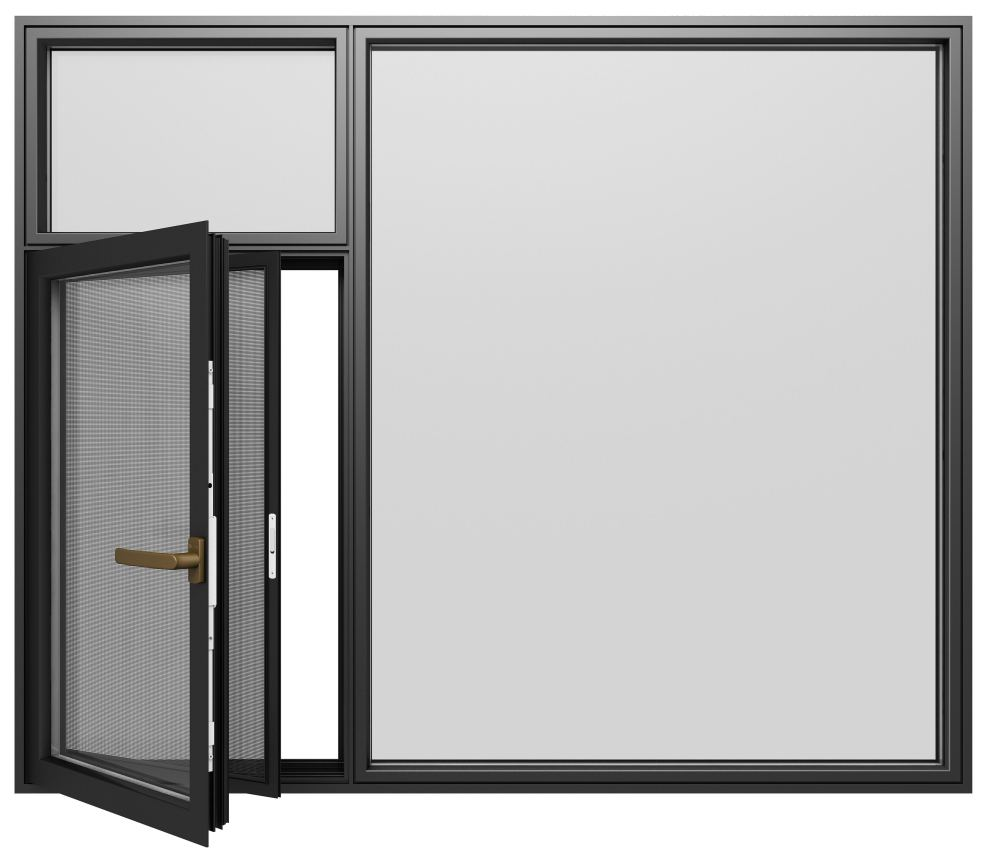In contemporary design, windows are no longer perceived as mere holes for light and ventilation. They have assumed the role of interfaces between interior and exterior, mediating the experience of space by its occupants, the interaction of buildings with their environment, and the achievement of energy efficiency and comfort. The Sistema di finestre a battente integrato embodies this evolution, meeting the demands of modern architecture where windows are expected to offer security, insulation against heat and cold, strength against wind pressure and impact from debris, plus beauty — all integrated into one system.
Conventional fenestration systems frequently do not successfully reconcile these requirements. Bulky framing may impinge upon the view, visible hardware spoils interior minimalism, and inadequate drainage or sealing support means that the performance can be lost in a storm or humidity brought to the climate. This is an evolving market as it gets more demands for perfection from homeowners, architects, and developers.
One of the real product breakthroughs is the Integrated Casement Window System. It does not act as a single window type but is, rather, to be understood as a system—modular, customizable engineering being its key attributes, with aesthetic versatility and adaptivity in varied contexts. Just like the modular trims found in luxury, this system provides configurable options for every client to find that perfect balance between performance and budget, and design ambition.
Product Positioning and Core Value
The Integrated Casement Window System positions itself not merely as a product but as a platform. Its value lies in merging engineering rigor with architectural freedom, while offering scalability for projects ranging from single homes to high-rise towers.
Dual Editions: Standard and Premium
The system is typically available in two tiers:
Edizione standard
Designed around core engineering principles, this edition delivers reliability and cost-effectiveness. It emphasizes structural stability, dependable hardware, and consistent thermal performance — ideal for residential developers seeking strong baseline quality.Edizione Premium
Tailored for discerning clients, the premium version introduces upgrades such as self-lubricating hardware, fingerprint-resistant coatings, and integration with smart home sensors. Architects designing coastal villas, luxury penthouses, or cutting-edge commercial buildings often select this tier for its bespoke adaptability.
Lifestyle-Centered Value Proposition
What sets the Integrated Casement Window System apart is its ability to adapt to the lifestyle context of its users:
In urban apartments, it maximizes natural light while offering noise reduction.
In coastal retreats, it resists corrosion and withstands storms.
In alpine homes, it ensures insulation against extreme cold.
By aligning technical features with human comfort, the system communicates its value not only to professionals but directly to end-users.
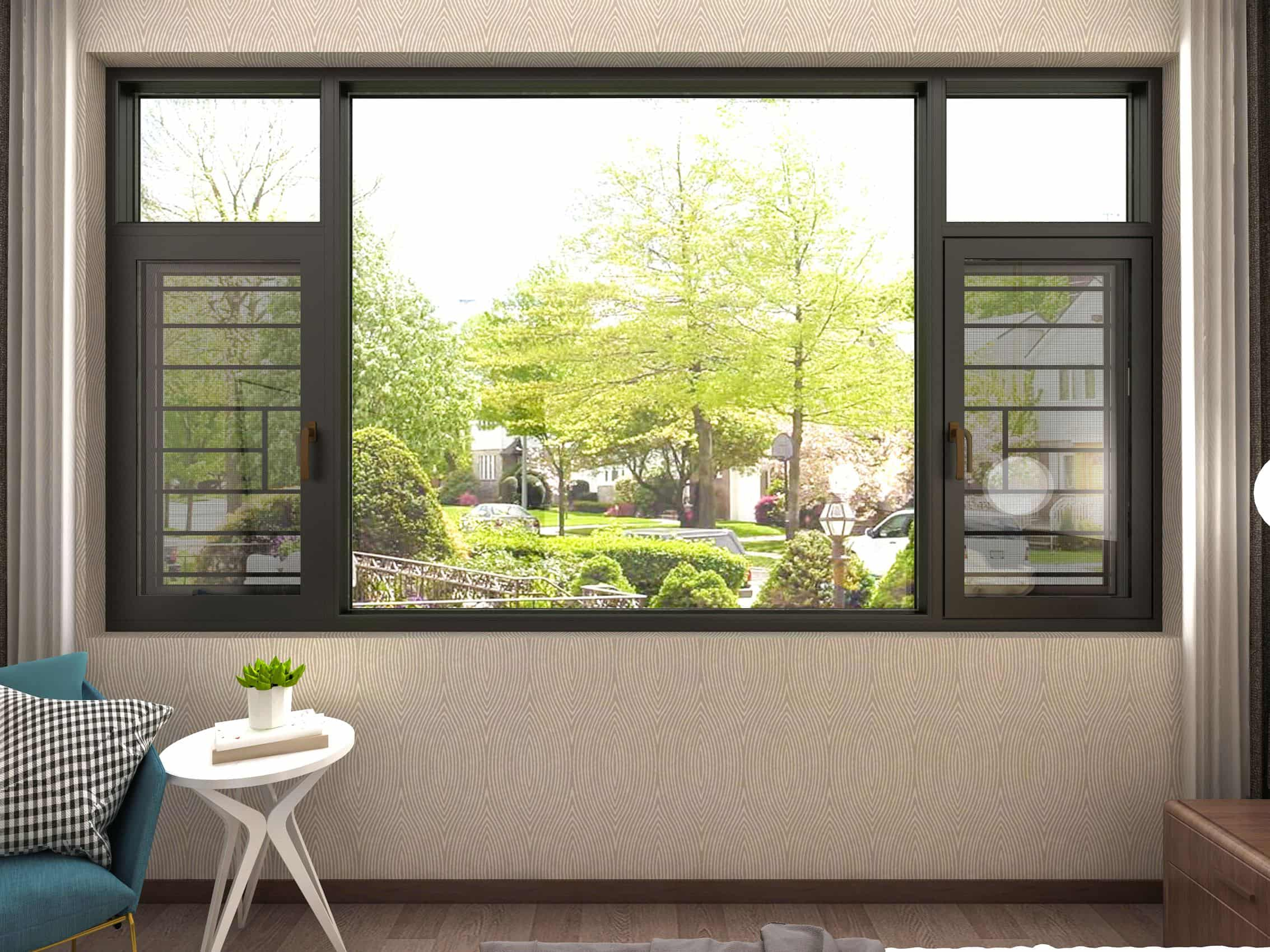
Engineering Excellence: The Invisible Mastery
The strength of the Integrated Casement Window System lies in its hidden details, where engineering precision elevates performance without compromising aesthetics.
Flush Surfaces and Hidden Drainage
The system employs laser-aligned frames with concealed four-channel drainage. Unlike conventional designs where water pooling or visible weep holes can degrade appearance, this concealed approach ensures:
Continuous sightlines resembling “floating glass” aesthetics.
Elimination of visible screws or bulky seams.
Reliable drainage under heavy rainfall reduces long-term maintenance.
Multi-Mode Opening Options
Versatility is a hallmark of the system, offering multiple opening modes within one integrated framework:
Tilt-and-Turn (Inward): Micro-ventilation while maintaining child safety and ease of cleaning.
Side-Hung (Outward): Traditional casement for maximum airflow.
Outward Tilt: Provides weather-protected ventilation in rainy climates.
Integrated Safety Guardrail
For high-rise applications, the system integrates structural-grade aluminum guardrails capable of supporting up to 300 kg. This feature enhances safety without compromising slim sightlines or design continuity.
Integrazione perfetta tra porta e finestra
Through patented jointing technology, window panels integrate seamlessly with sliding doors or curtain walls, enabling panoramic views without disruptive framing. This is especially valuable in corner configurations or balcony glazing.
Oversized Ergonomic Handles
Aircraft-grade aluminum handles, positioned on both glass and screen sashes, offer tactile comfort and effortless operation — even with one finger.
Spatial Design Philosophy: Architecture Meets Lifestyle
Windows are no longer just building elements; they shape how space is perceived and experienced. The Integrated Casement Window System emphasizes a design philosophy rooted in aesthetics, ergonomics, and the interplay of light and shadow.
- Outset Glazing and Shadow Lines
Glass sits even with outside faces, making soft shadow lines that reflect fancy display cases. This gives a smooth front with both depth and pattern. - Big-Round Ongoing Beads
Smooth 8 mm round glass holders boost light play, bringing life to inside spaces while also stopping dust from piling up. - Frame Grooves for Better Flow of Air
A groove mill throws by breaking up wind currents, reducing the pressure of the storm by a maximum of 22% at a wind speed of 150 km/h. This puts aesthetic detailing into tangible performance.
Climate-Specific Adaptability
A universal system must also be regionally customizable. The Integrated Casement Window System offers 12 configurable parameters to optimize performance across diverse environments.
Thermal Performance
U-values adjustable between 0.83–1.2 W/m²K, meeting or exceeding international energy codes.
Acoustic Control
Triple seals and stepped glazing deliver up to 42 dB sound reduction, tested against Berlin’s U-Bahn noise levels.
Drainage and Weather Resistance
Pressure-equalized cavities prevent infiltration at wind pressures up to 120 Pa.
Tested in coastal regions with high salt and humidity exposure.
Structural Profiles
1.4 mm for standard residences.
1.6 mm for coastal or high-wind zones.
2.0 mm for extreme climates or security-sensitive projects.
Applications Across Building Typologies
Urban High-Rises
Integrated guardrails improve safety.
Noise insulation ensures resident comfort near transit corridors.
Coastal Villas
Corrosion-resistant alloys withstand saline air.
Outward tilt openings allow safe ventilation during storms.
Alpine Chalets
Thermally broken joints minimize heat loss.
Reinforced welded corners enhance resistance to snow loads.
Commercial and Mixed-Use Projects
Unitized systems streamline installation for curtain wall façades.
9-square grid designs recreate classical divisions with modern thermal insulation.
Market Insights and Industry Trends
The global fenestration market is being reshaped by sustainability, energy codes, and user expectations.
| Trend | Market Relevance | System Response |
|---|---|---|
| Energy Efficiency Regulations | Stricter U-values in the EU, the US, and Asia | Adjustable thermal performance (0.83–1.2 W/m²K) |
| Urban Noise Concerns | Cities demand >40 dB sound insulation | Triple seals, stepped glazing, achieving 42 dB |
| Smart Home Integration | IoT-enabled windows are gaining traction | Optional smart sensors in Premium Edition |
| Aesthetic Minimalism | Demand for slim frames and flush designs | Hidden drainage, floating-glass effect |
| Safety and Resilience | Focus on high-rise safety and extreme weather events | Integrated guardrails, storm-tested profiles |
By aligning with these trends, the Integrated Casement Window System positions itself as a future-ready solution for developers and architects alike.
Installation and Lifecycle Maintenance
Installation Efficiency
Unitized modules accelerate construction timelines.
Pre-assembled corner joints reduce onsite labor costs.
Maintenance Benefits
Hidden drainage minimizes clogging and visible stains.
Self-lubricating hardware reduces service frequency.
Anti-fingerprint finishes keep surfaces pristine.
Lifecycle studies have proven that it is integrated systems that reduce the total cost of ownership by up to 18% when compared with fragmented solutions-considering maintenance, energy savings, and durability.
So much more than a window, the Integrated Casement Window System is architecture — made to offer a synthesis of form and function, finding that precarious middle ground between technical prowess, user comfort, and aesthetic polish.

